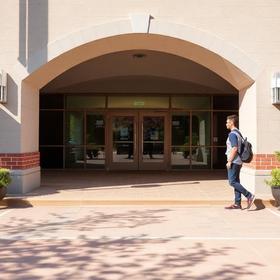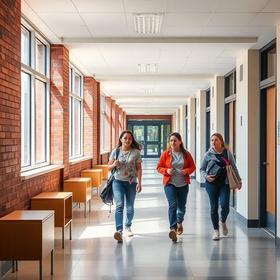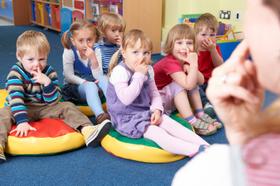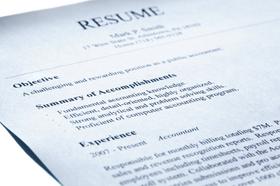Free Schools
There are only a handful of free private schools in the United States.
- Most of them were founded many years ago by visionary, community-minded individuals.
- These public-minded men and women believed that children from working-class and poor families should have the same educational advantages as children from families with money.
- Several schools have a religious connection, such as Regis High in New York and the Cristo Rey Schools.
- While the details vary from school to school, they all provide a tuition-free education.
- The Cristo Rey schools have a work-study component.
Parental involvement is another feature of these schools.
- These schools have had an enormous impact on society.
- They benefit thousands of students, and their families are priceless.
As you read about these schools and watch the videos, remember that all these schools believe emphatically that an education does not consist solely of academics.
- Each school understands that a child needs nurturing and counseling to maximize the opportunities before him.
- These schools expect the child's family to be involved.
- His education is a partnership of three: home, school, and student. T
- hat's what it takes to provide the solid foundation a child needs to succeed in adulthood.
Canva generated this picture of a parent.
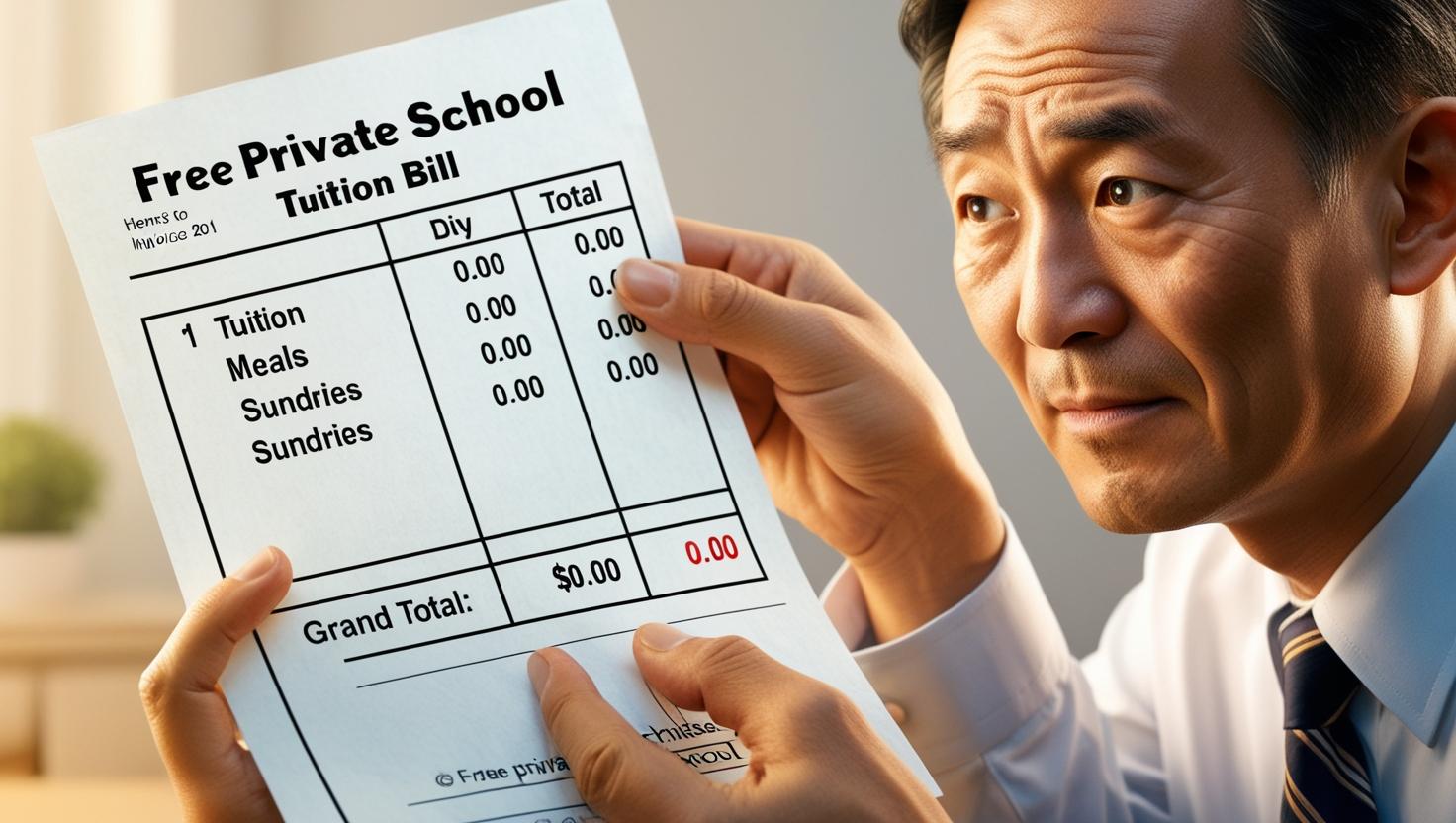
Free Private Schools
De Marillac Academy, San Francisco
De Marillac Academy, San Francisco, is an example of the best educational initiative the Roman Catholic Church sponsored.
- Established by the Daughters of Charity and De La Salle Christian Brothers, the school provides tuition-free schooling for middle school-age children in one of San Francisco's poorest neighborhoods.
- The key to De Marillac's ability to accomplish its mission is the Academy's Schoolwide Learning Expectations.
- The Academy isn't simply providing a top-notch academic education.
- It ensures that all the supporting elements are in place so a child can succeed.
- De Marrilac educates children in Grades 5-9. It serves approximately 80 students.
Learn more about the De Marrilac Academy's mission here.
Epiphany School, Boston
Like De Marillac Academy on the West Coast, Epiphany School in Boston serves middle school-age children from Boston neighborhoods with a tuition-free education.
Epiphany is a ministry of the Episcopal Church.
- Who can attend?
- "Epiphany School admits students who are from low-income, racially diverse families living in Boston, Massachusetts. The goal is a student body that encompasses a broad range of cognitive diversity. Students are chosen by lottery."
Like De Marillac Academy, Epiphany provides more than an excellent academic education.
- The school offers essential support mechanisms for families, such as counseling, extended-hour programs, individualized attention, and small classes.
- Epiphany proudly proclaims that it "never gives up on a child."
- Epiphany School offers Grades 5-8 and serves approximately 80 students.
Here is a brief explanation of how Epiphany School works.
The Gilbert School
In 1895, William L. Gilbert founded the school that bears his name.
The Gilbert School serves the residents of Winchester and Hartland, Connecticut.
The Gilbert School is one of those rare examples of a private school that serves as the local public school. Gilbert's vision was "to educate the young as will help them become good citizens."
The school is free to students in Grades 7-12 who are residents of the Connecticut towns of Winchester and Hartland. The school accepts tuition-paying students, including international students. There are approximately 550 students.
You can hear The Gilbert School choir sing in this next video.
Girard College, Philadelphia, Pennsylvania
When he founded Girard College in Philadelphia, Stephen Girard was one of the wealthiest men in America.
"The school's benefactor, Stephen Girard (1750-1831), left his generous estate to educate and care for needy children. As long as Girard College has existed, all its students have received full scholarships, benefited from strong academic and extracurricular programs and lived safely on an enclosed, 43-acre campus in Philadelphia, Pennsylvania."
- The school is unique because all students board from 1st through 12th grade, tuition-free.
- The school serves approximately 580 students in Grades 1-12.
- Almost 100% of its graduates matriculate to college.
Malik Ray of the 2011 class told us what Girard College meant to him.
Glenwood Academy, Glenwood, Illinois
Established in 1887, Glenwood Academy operates day and residential programs for disadvantaged children.
- To attend Glenwood, you pay what you can afford.
- The school serves approximately 130 students in Grades 3-8.
Glenwood Academy is a private boarding school for children in grades 3 -8 that are academically capable and from low income families and/or headed by a single parent or guardian. Glenwood educates 140 students on a campus located in Glenwood, IL, from 55 communities throughout the Greater Chicago and Fox Valley areas. Over 80% of our children are from low income families and 91% of our children are from single-parent households.
Here is a day in the life of Glenwood Academy.
The Kamehameha Schools, Honolulu, Hawaii
The Kamehameha Schools were established in 1887 by Princess Bernice Pauahi, the daughter of the last King of Hawaii, King Kamehameha I.
- She sought to provide a sound education for the indigenous children of Hawaii by giving 375,000 acres of her family's land to a trust to educate Hawaiians.
- Kamehameha's endowment is the largest secondary school endowment in the United States, valued at approximately $15.1 billion in 2024.
- The school serves 6,500 students in grades PK-12 on three campuses in Hawaii.
- It also operates 29 preschools serving 1,500 students.
A Kamehameha parent explains what the school means to her in this next video.
The Milton Hershey School, Hershey, Pennsylvania
Yes, that Hershey. The founder of the chocolate company, which bears his name, also established in 1909 a school known as The Milton Hershey Schoo/.
- Sending your child off to a residential school is a major decision.
- The school serves approximately 1,800 students in Grades PK-12.
The School is funded by a trust established by Milton S. Hershey and his wife Catherine. Milton Hershey School offers a positive, structured home life year-round and an excellent pre-kindergarten through 12th grade education. Our vision focuses on building character and providing children with the skills necessary to be successful in all aspects of life.
This Milton Hershey School parent explains how she handled
it.
Regis High, New York, New York
Regis High was established in 1914 by an anonymous benefactor.
- It educates boys from 9th through 12th grade in the Jesuit tradition.
- This is a highly competitive school that offers a rigorous academic program.
- The school serves approximately 530 students in Grades 9-12.
As a Jesuit school Regis is committed to both academic excellence and fostering a spirit of generosity and service to those in need. With an emphasis on academic rigor and Catholic formation, the school's program is designed to promote each student's intellectual and spiritual growth grounded in a deepening relationship with Jesus Christ. Regis seeks to inspire and train the ethnically diverse young men in its care to become imaginative leaders committed to promoting justice and exerting leadership in the Church, in the civic community, and in their chosen profession.
What is Regis? Let's find out.
The Cristo Rey Schools
The Cristo Rey Schools offer another approach to providing private school education to students from families with low incomes.
- The schools incorporate a work-study component into their students' schedules, which funds most of their college preparatory education.
- Families are responsible for a small tuition charge, although most schools offer limited financial aid.
- There are 25 Cristo Rey schools in seventeen states and the District of Columbia.
Here's a look at the Cristo Rey Schools.
St. Andrew's School, Richmond, Virginia
St. Andrew's School transforms lives by providing quality, progressive education.
- It serves children from families with limited financial resources through a full scholarship for every child.
- Their commitment over the past 120 years has been unwavering and continues to be true to the vision of the man who started their school back in 1894.
What can you do to help?
As you read this article, chances are you are doing so from the comfort of your own home.
- Why not be proactive in letting others know about these outstanding free schools?
- All too often, families that could benefit from sending their children to a tuition-free private school are not even aware that such options exist.
If you feel so inclined, please send a gift to any or all of these schools.
- By supporting schools like these, you can keep the vision of Stephen Girard, Milton Hershey, Princess Bernice Pauahi, and all the other visionary benefactors alive.
- Your generosity can be a positive, life-changing force for a young person.
Schools like the ones described above were founded because wealthy people had a vision.
- They understood that they had to do something important to ensure a well-educated citizenry for the future.
- As you read the history of each school, you will see how the schools have also changed in so many ways from the institutions their founders envisaged years ago.
- Those changes and adaptations have made these schools even more relevant and effective in the 21st century.
Questions? Contact us on Facebook, Instagram. YouTube. @privateschoolreview
#FreePrivateSchools #EducationForAll #ScholarshipOpportunities #TuitionFreeSchools #PrivateEducation


